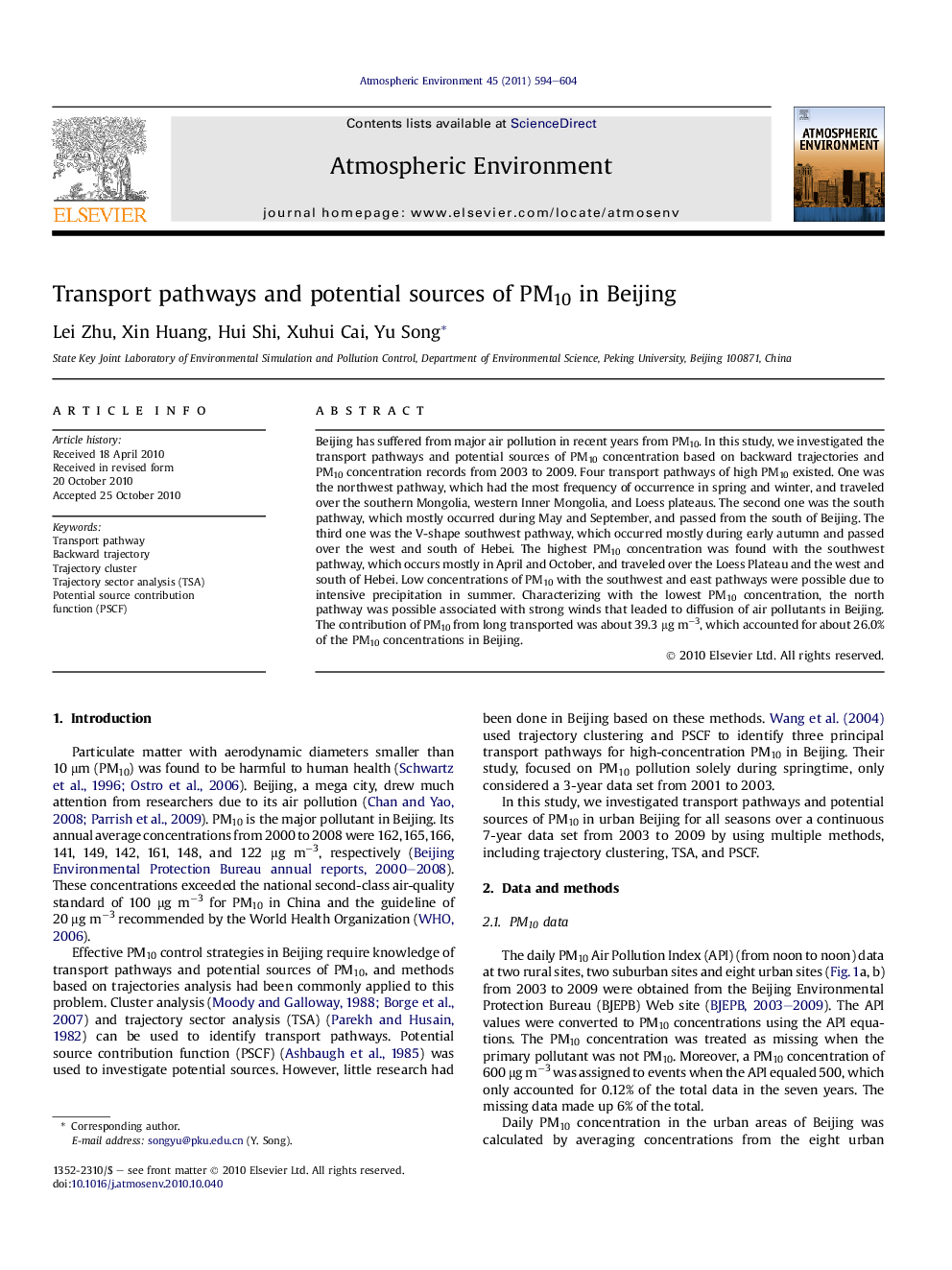| Article ID | Journal | Published Year | Pages | File Type |
|---|---|---|---|---|
| 4440203 | Atmospheric Environment | 2011 | 11 Pages |
Beijing has suffered from major air pollution in recent years from PM10. In this study, we investigated the transport pathways and potential sources of PM10 concentration based on backward trajectories and PM10 concentration records from 2003 to 2009. Four transport pathways of high PM10 existed. One was the northwest pathway, which had the most frequency of occurrence in spring and winter, and traveled over the southern Mongolia, western Inner Mongolia, and Loess plateaus. The second one was the south pathway, which mostly occurred during May and September, and passed from the south of Beijing. The third one was the V-shape southwest pathway, which occurred mostly during early autumn and passed over the west and south of Hebei. The highest PM10 concentration was found with the southwest pathway, which occurs mostly in April and October, and traveled over the Loess Plateau and the west and south of Hebei. Low concentrations of PM10 with the southwest and east pathways were possible due to intensive precipitation in summer. Characterizing with the lowest PM10 concentration, the north pathway was possible associated with strong winds that leaded to diffusion of air pollutants in Beijing. The contribution of PM10 from long transported was about 39.3 μg m−3, which accounted for about 26.0% of the PM10 concentrations in Beijing.
Research highlights► Transport pathways lead to different levels of PM10 in Beijing were identified. ► Transported pathways could be explained by typical synoptic patterns. ► Identified potential sources of PM10 matched with transport pathways.
